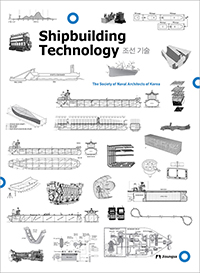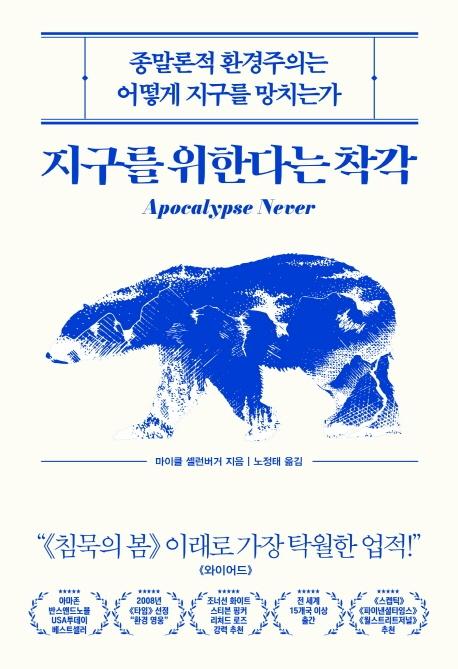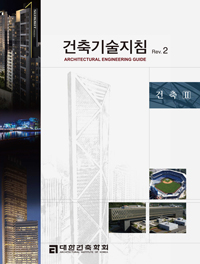- 주문상품수량
- 개
- 예상적립금
P - 상품할인금
- 원
- 배송료
- 원
- 주문합계
- 원
네비게이션 실시간 인기 책

Shipbuilding Technology <조선 기술> 영문판
- The Societ 저
- 지성사
- 2015년 07월 01일
-
정가120,000원
-
판매가120,000원 [0% 할인]
-
페이코혜택가
페이코 혜택가 안내
3천원 이상 구매 시 1,500원 할인ID당 총 3회 할인가능
-
페이코혜택가
페이코 혜택가 안내
3천원 이상 구매 시 500원 할인ID당 총 3회 할인가능
-
결제 혜택무이자
카드할인/포인트결제 안내
제휴카드
반디앤루니스 롯데카드 결제금액 최대 25% 청구할인 (1만원 이상 결제건에 한해 월 2회, 건당 최대 1만원 할인) 반디앤루니스 우리V카드 결제금액 10% 청구할인 포인트결제
OK캐쉬백 포인트 최소 10원부터 전액 사용 or 1% 적립 현대카드 M포인트 결제금액의 최대 10% 사용 가능 신한카드 포인트 결제금액의 최대 10% 사용 가능(일부카드) 하나(구.외환) 포인트 보유 한도 내에서 100% 사용 가능 씨티카드 포인트 결제금액의 최대 50% 사용 가능 할인카드
NH농협 TAKE5카드 20% 청구할인(Edu Pack) 채움 플래티늄 멀티카드 20% 청구할인 모바일 Tmoney 신한카드 10% 청구할인 신한카드 Shopping 10% 청구할인 NH농협 체크카드 10% 청구할인 NH20 해봄 신용카드 10% 청구할인 씨티 클리어 카드 7% 청구할인 NH20 해봄 체크카드 5% 청구할인 NH농협 LADY다솜카드 5% 청구할인 신한카드 큐브 5% 청구할인 신한카드 큐브 PLATINUM# 5% 청구할인 
무이자 안내

-
적립금3,600원 적립 [3%P]
NAVER Pay 결제 시 네이버페이 포인트 5% 적립 ?
추가 적립금 안내
[2천원 추가 적립]
총 주문금액 5만원 이상 구매 시 2,000원 추가 적립
도서(eBook포함)만 구매 시 적립 대상에서 제외업채배송상품 포함(기프트, 업체배송 등) 5만원[멤버십 추가 적립]
슈퍼루니 : 3% 추가 적립
골드루니 : 2% 추가 적립
실버루니 : 1% 추가 적립
단, 국내도서, eBook만 구매 시 적립 불가

-
네이버마일리지적립


-
배송구분업체배송(반디북)
-
배송료무료배송
-
출고예정일
출고예정일 안내
※ 출고예정일은 도서 재고상황에 따라 변동될 수 있습니다.
 2025년 07월 15일(화)
2025년 07월 15일(화)※ 출고예정일은 도서 재고상황에 따라 변동될 수 있습니다.
당일배송 가능지역 검색

“도로명주소”를 쉽게 찾아보세요
1. 도로명으로 검색하기 (예, “직지길” or “직지길+322”)
2. 건물명으로 검색하기 (예, “반디앤루니스빌딩”)
3. 동(읍/면/리) 으로 검색 (예, “인사동” or “인사동+43”)
4. 도로명주소를 모르실 경우 도로명주소 안내시스템(http://www.juso.go.kr)에서 확인해주세요.
주소의 동(읍/리/면) 또는 마지막 부분을 입력하신 후 검색을 누르세요.


지금 이책은
- 판매지수 : 0
이 분야의 베스트셀러
-
 지구를 위한다는 착각
마이클 셸런버거
19,800원
지구를 위한다는 착각
마이클 셸런버거
19,800원
-
 빌 게이츠, 기후재앙을 피하는 법
빌 게이츠
16,020원
빌 게이츠, 기후재앙을 피하는 법
빌 게이츠
16,020원
-
 건축기술지침 Rev.2 : 건축 2
대한건축학회, 대우건설
38,000원
건축기술지침 Rev.2 : 건축 2
대한건축학회, 대우건설
38,000원
책 소개
출판사 리뷰
대한민국 조선해양산업의 경쟁력 강화와 더불어
세계 제1위 조선국의 위상을 드높이기 위한 첫 걸음,
[조선 기술] 영문판 드디어 출간!
조선해양공학 분야의 학술 및 기술 발전과 보급에 기여하기 위?해 1952년 11월 조선공학 전공학자들이 중심이 되어 설립된 대한조선학회에서는 조선해양산업에 관심을 가진 모든 이를 위해 전공에 관계없이 조선 기술 전반의 핵심을 두루 살펴볼 수 있는 도서가 필요하다는 데 뜻을 모아 지난 2011년 12월 30일 [조선 기술-배 만들기의 모든 것](지성사 출간)을 펴냈다.
조선업계는 물론 학계,...
대한민국 조선해양산업의 경쟁력 강화와 더불어
세계 제1위 조선국의 위상을 드높이기 위한 첫 걸음,
[조선 기술] 영문판 드디어 출간!
조선해양공학 분야의 학술 및 기술 발전과 보급에 기여하기 위해 1952년 11월 조선공학 전공학자들이 중심이 되어 설립된 대한조선학회에서는 조선해양산업에 관심을 가진 모든 이를 위해 전공에 관계없이 조선 기술 전반의 핵심을 두루 살펴볼 수 있는 도서가 필요하다는 데 뜻을 모아 지난 2011년 12월 30일 [조선 기술-배 만들기의 모든 것](지성사 출간)을 펴냈다.
조선업계는 물론 학계, 연구소 등 조선 기술과 관련 있는 모든 분야의 최고 전문가로 구성된 편찬위원 22명이 심혈을 기울인 이 책은 우리나라 조선산업과 조선 기술 전반을 이해하는 데 훌륭한 지침서로 평가받고 있다.
여기에 머물지 않고 대한조선학회에서는 세계 제1위 조선강국의 위상을 드높이기 위한 작업으로 4년여에 걸쳐 마침내 영문판을 펴내게 되었다. 조선공학에 뜻을 둔 세계의 모든 젊은이는 물론, 현직에 있는 세계 조선 기술자들이 대한민국의 조선 기술을 개관하는 도서로 널리 활용할 수 있으리라 자부한다.
?Publication of English version
Shipbuilding Technology was finally published in January 2012 and since then it has served as a favorite primer for understanding naval architecture and ocean engineering. The first edition was sold out so fast and additional copies were printed in September 2012. Such a reputation made the book to be chosen as one of the best academic publication of the year by the Ministry of the Culture and Tourism in July 2012. In November, SNAK sounded Prof. Hyochul Kim, chairman of the editorial committee, out on translation of Shipbuilding Technology into English.
The translation was a challenging task to the committee but it couldn’t simply ignore the proposal. Therefore, the chairman convened a meeting of the authors of Shipbuilding Technology, mostly work in the southern part of the country, at a conference room of DSEC Co., Ltd. in Busan. It was decided to go ahead with the translation project and various topics such as an estimate and work scope were discussed along with plans for publication and distribution of the final product. Based on the results of the meeting, the committee for translation of Shipbuilding Technology into English was formed on December 14th, 2012 to give shape to the action plan. An additional authors’ meeting was held in Geoje region on January 24th, 2013 and subsequently some leading members of the committee visited Hyundai Heavy Industries Co. and Mipo Dockyard Co., Ltd. to ask for their supports.
The participants in the translation was finalized at the committee meeting on February 4th, 2013 held at the Department of Naval Architecture and Ocean Engineering, Chungnam National University and they gathered together for the first time on February 28th, 2013. SNAK’s board of directors officially decided on March 8th, 2013 to translate the book into English to commemorate the 60th anniversary of SNAK.
At the committee meeting held on May 23th, 2013 in Jeju Island, it was decided to collect and integrate translated manuscripts until July 30th. However, some of the participants were too busy to meet the schedule and made the whole project stalled until professional expert take over their manuscripts.
The original intention of the committee was to conclude the project no later than end of October 2013 but it actually took more than 18 months to complete the final English manuscript of Shipbuilding Technology on February 2015. It should be mentioned here that Dr. B. S. Lee who served at University of Strathclyde, Glasgow contributed greatly to polishing up the translated manuscripts and made the manuscripts become a step closer to familiar English. The committee extends its appreciation to Dr. Lee, and also to Prof. Jong Ho Nam, Mr. Soon Gil Park and Mr. Seung Kyun Park who joined the translation project later to back up.
The committee expects that English version of Shipbuilding Technology can be published in September, 2015 and that the book would be a small return to the global shipbuilding community from Korea, the country initiated its own shipbuilding industry with help of Western technology. The commit
저자 소개
목차
●A Word from the President
●Foreword
●Foreword from Korean edition
●Editor’s Preface
CHAPTER 1: Introduction to Ships and Shipbuilding
1. Definitions of Ships and Their Significance/ 2. Ships and Shipbuilding
3. Types of Ships/4. Origins of Korean Shipbuilding Technologies
5. Outline History of the World Shipbuilding Industry/6. Marine Equipment Industry References
CHAPTER 2: Sale and Purchase of Ships
1. Introduction/ 2. Preparation for Ordering/ 3. Ship-owner’s Decision to Place Orders/ 4. Shipyard’s Bid Preparations/ 5. Contract Negotiations/ 6. Contract Documents/ 7. Contract Management/ 8. After-Delivery Service/ References
CHAPTER 3: Ship Design
1. Definition and Characteristics of Ship Design/ 2. Principal Dimensions as a Design Consideration/ 3. Design Constraints/ 4. Design Process and Steps/ 5. Computer-Aided Ship Design and Application of Information Technology/ References
CHAPTER 4: Hull Form Design
1. Ship’s Principal Particulars and Hull Form Coefficients/ 2. Basics of Hull Form Design/ 3. Hull Forms and Power Requirements/4. Ship Stability and Righting Moments/ 5. Characteristics of Hull Forms by Ship Types/ References
CHAPTER 5: Resistance and Propulsion
1. Introduction/ 2. Viscous Resistance/ 3. Wave-Making Resistance/ 4. Determining the Ship Resistance/ 5. Local Flow Measurements/ 6. Propeller/ 7. Propulsion of Ships/ 8. Powering of Ships/ 9. Cavitation/ 10. Unconventional Propulsors/ References
CHAPTER 6: Ship Motions and Maneuverability
1. Ocean Waves/ 2. Basic Equations of Ship Motions/ 3. Ship Motions in Regular Waves/ 4. Ship Motions in Irregular Waves and Application to Design/ 5. Control of Ship Motions/ 6. Other Major Issues Associated with Ship Motions/ 7. Ship Maneuverability/ 8. Evaluation of Ship Maneuverability/ 9. Control of Ship Maneuvering/ References
CHAPTER 7: Propulsion Plant
1. Development of Marine Propulsion Systems/ 2. Types of Propulsion Machinery/ 3. Shafting System for Ship Propulsion/ 4. Fuels/ 5. Future Technologies for Power and Propulsion Plant/ References
CHAPTER 8: General Arrangement
1. Introduction to Compartments and General Arrangement/ 2. Arrangement of Bulkheads/ 3. Arrangement of Machinery Spaces/ 4. Arrangement of Fuel Oil Tanks/ 5. Arrangement of Cargo Spaces by Ship Type/ 6. Arrangement of Deck Spaces/ 7. Layout of Accommodation Quarters/ 8. Layout of Navigation Bridge/ 9. General Arrangement of Passenger Ships/ References
CHAPTER 9: Ship Structures
1. External Forces Acting on the Hull/ 2. Hull Damage/ 3. Characteristics of Ship Structure/ 4. Structural Strength of the Hull/ 5. Structural Analysis of the Hull/ 6. Vibration and Noise/ References
CHAPTER 10: Outfitting
1. Steering Gear and Rudders/ 2. Navigation and Radio System/ 3. Loading? Unloading System/ 4. Deck Outfitting/ 5. Lifesaving System/ 6. Piping Arrangements/ 7. Fire Safety/ 8. Air Conditioning Facility/ 9. Pollution Prevention Facilities/ 10. Accommodation Outfitting/ 11. Electricity and Lighting/ References
CHAPTER 11: Ship Production Technology
1. Production Design/ 2. Shipbuilding Facilities/ 3. Construction Processes
4. Outfitting Work/ 5. Erection/ 6. Painting Techniques and Paints/ 7. Special Ship Construction Techniques Developed in Korea/ 8. Launching/ 9. Inclining Experiments/ 10. Sea Trials/ References
CHAPTER 12: Production Management
1. Production Planning/ 2. Production Management System/ 3. Simulation of Production Process/ 4. Measuring Techniques/ 5. International Standards/ 6. Surveys/ References
CHAPTER 13: Naval Ships
1. Characteristics of Naval Ships/ 2. Platform Technologies/ 3. Naval Combat System Technologies/ 4. Survivability Technologies/ References
CHAPTER 14: Marine Leisure Craft
1. Forms of Marine Leisure/ 2. Types of Marine Leisure Craft/ 3. Design of Recreational Boats/ 4. Manufacturing Process of Recreational Boats/ 5. Berthing Facilities/ 6. Leisure Boat Industry in Korea/ References
CHAPTER 15: Offshore Structures
1. Pr
배송 시 유의사항
- 반디앤루니스에서 구매하신 도서는 물류 대행 위탁업체 웅진 북센을 통해 배송됩니다.
(배송 포장에 "웅진 북센"으로 표기될 수 있습니다.)
- 구매한 상품의 품질과 배송 관련 문의는 반디앤루니스로 문의 바랍니다.
- 천재지변 및 택배사의 사정에 따라 배송이 지연될 수 있습니다.
- 결제(입금) 완료 후 출판사 및 유통사의 사정으로 품절 또는 절판 되어 상품 구입이 어려울 수 있습니다. (별도 안내 예정)
- 도서산간지역의 경우 추가 배송비가 발생될 수 있습니다.
반품/교환
상품 설명에 반품/ 교환 관련한 안내가 있는 경우 그 내용을 우선으로 합니다. (업체 사정에 따라 달라질 수 있습니다)
반품/교환
-
반품/교환 반품/교환 방법 홈 > 고객센터 > 자주찾는질문 “반품/교환/환불” 안내 참고 또는 1:1상담게시판 반품/교환 가능 기간 반품,교환은 배송완료 후 7일 이내, 상품의 결함 및 계약내용과 다를 경우 문제발견 후 30일 이내에 신청가능 반품/교환 비용 변심 혹은 구매착오의 경우에만 반송료 고객 부담(별도 지정 택배사 없음) 반품/교환 불가 사유 - 소비자의 책임 사유로 상품 등이 손실 또는 훼손된 경우
- 소비자의 사용, 포장 개봉에 의해 상품 등의 가치가 현저히 감소한 경우
- 복제가 가능한 상품 등의 포장을 훼손한 경우 : 예)만화책, 잡지, 화보집 등
- 시간의 경과에 의해 재판매가 곤란한 정도로 가치가 현저히 감소한 경우
- 전자상거래등에서의 소비자보호에 관한 법률이 정하는 소비자 청약철회 제한 내용에 해당되는 경우
- 해외주문 상품(해외 원서)의 경우(파본/훼손/오발송 상품을 제외)
소비자 피해보상
환불지연에 따른 배상- 상품의 불량에 의한 반품, 교환, A/S, 환불, 품질보증 및 피해보상 등에 관한 사항은
소비자 분쟁해결 기준(공정거래위원회고시)에 준하여 처리됨 - 대금 환불 및 환불지연에 따른 배상금 지급 조건, 절차 등은 전자상거래 등에서의
소비자 보호에 관한 법률에 따라 처리함
반품/교환 주소 경기도 파주시 문발로 77, 웅진북센(반디앤루니스)





